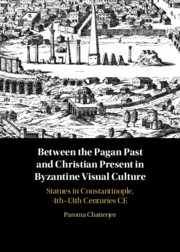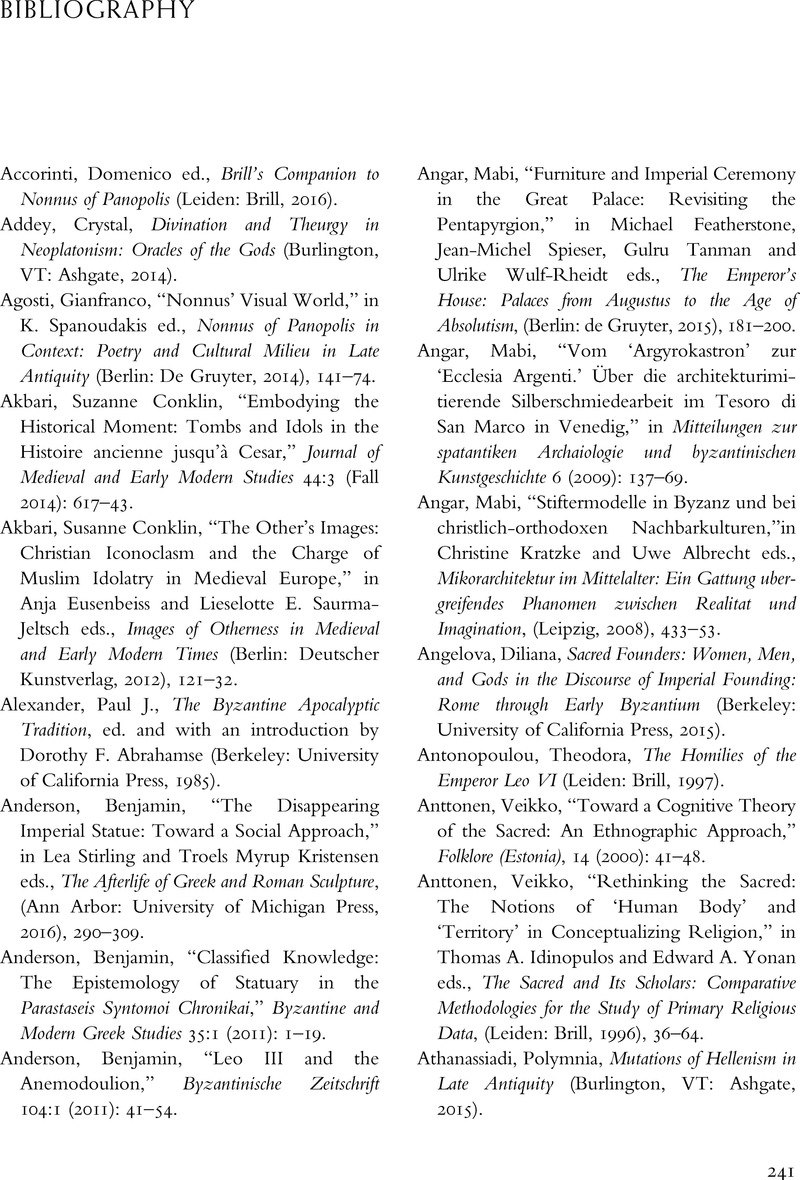 Between the Pagan Past and Christian Present in Byzantine Visual Culture
Between the Pagan Past and Christian Present in Byzantine Visual Culture Book contents
- Between the Pagan Past and Christian Present in Byzantine Visual Culture
- Between the Pagan Past and Christian Present in Byzantine Visual Culture
- Copyright page
- Dedication
- Contents
- Illustrations
- Acknowledgments
- One The Byzantine Statue
- Two Prophecy
- Three History
- Four Mimesis
- Five Epigrams and Statues
- Epilogue
- Notes
- Bibliography
- Index
- References
Bibliography
Published online by Cambridge University Press: 17 September 2021
- Between the Pagan Past and Christian Present in Byzantine Visual Culture
- Between the Pagan Past and Christian Present in Byzantine Visual Culture
- Copyright page
- Dedication
- Contents
- Illustrations
- Acknowledgments
- One The Byzantine Statue
- Two Prophecy
- Three History
- Four Mimesis
- Five Epigrams and Statues
- Epilogue
- Notes
- Bibliography
- Index
- References
Summary

- Type
- Chapter
- Information
- Between the Pagan Past and Christian Present in Byzantine Visual CultureStatues in Constantinople, 4th-13th Centuries CE, pp. 241 - 260Publisher: Cambridge University PressPrint publication year: 2022


